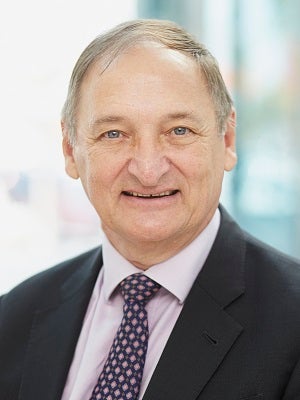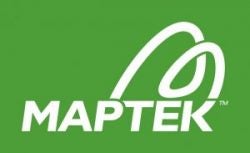

Maptek recently collaborated with Roy Hill as part of a project to find new ways to accelerate orebody knowledge and inform mine planning. One outcome of the collaboration was the delivery of a new machine learning approach to grade estimation.
We spoke to Roy Hill CEO Barry Fitzgerald to understand Roy Hill’s approach to technology partnerships, and how to get the most out of an innovation partnership.
Could you tell me what the partnership between Maptek and Roy Hill looked like?
We’d been looking to make sure our mine planning and understanding of our orebody is at the highest level possible, and were open to leveraging emerging technologies to realise this. We had people within our own team working towards a solution who had worked with people from Maptek previously. By talking with Maptek we identified that we had some common outcomes that we could work towards.
From a Roy Hill perspective we saw that by working with Maptek collaboratively, and in particular by not trying to own all the IP, we could move the product forward in a way which achieved much better outcomes for both of us. We had the operational knowledge and knew where we were trying to drive the product to – adding value – and obviously Maptek had the technology and the smarts and understanding of their system to bring the product to life.
So we had some really clear outcomes together, we had a collaborative environment which wasn’t driven by IP knowledge or ownership or anything like that. We managed it in a very professional way by having key governance meetings where we made sure we resolved issues in a timely manner and had weekly progress conversations both on a technical and at thinking level.
Fundamentally I think it was a really good combination of shared purpose and understanding of what was really going to add value to us and obviously the understanding from a technical point of view about how we could best do that.
Was there anything that surprised you during the partnership?
We knew that there was a lot of value to be unleashed, but if someone asked us to define what that value was, it probably would have been difficult for both of us to put a figure on it. We worked out if we worked together we could probably achieve something significant – and that’s what we did.
We leveraged automation and disruptive technology, to make the geologists the masters of their processes and systems, and that freed them up and that’s where we got the value. It freed our geologists so they now have time to critically think about the world rather than be process driven; and Maptek developed each program to drive that. The outcome we got was a really enhanced process in terms of what we could achieve as a business and I think the other outcome which probably surprised us was the level which we could bring technology and new thinking into the final outcome.
It’s interesting you talk about the critical thinking rather than process drive for the staff and the people. How important is this change of thinking?
If you think about the past, what we did was we spent a lot of time bringing the data together, collating it and putting it into a form which you could understand. We had quite long timeframes to do that, which were quite intensive on people.
Through this partnership with Maptek, we ended up developing a virtual reality model of the Roy Hill project and we used some machine learning technology for the geological modelling. We have been able to automate a lot of the processes and we can then generate a means of virtually looking and walking through the orebody and understanding it. That allows you to understand the complexity and the scale of the project.
I think that is something which is unique because it means the people who are doing the work are changing from grinding out the numbers to saying ‘I’ve now got the model, let’s walk through it and understand it.’ It allows you to visualise it in depth and in cross section so it allows you to work through it in three dimensions. It’s not a big step from there to then add the time dimension as well as the mine develops. There’s a huge amount of opportunity to look at the way things work.
How satisfying is it to see the mine presented in this whole new way?
It’s added a lot for our own staff in terms of what we’re doing with the orebody and it makes it much more accessible to a whole range of other people. You no longer need someone who’s looked at the plans that you get from the normal process to familiarise themselves. Not everyone has the capacity to understand or visualise things, and so what you can do is you can make it much more accessible to a whole range of people by saying ‘Hey, come have a look at this!’ and they can suddenly walk through it and they’re immersed in it.
We have what we call a ROC Ed program where we have school children visiting our office and we allow them to use this technology and walk through the orebody using VR headsets.
It works so well because many young people just get the technology and that allows us to bridge both the knowledge and age gap.
Was there a specific outcome from the project involving Maptek that was the most important or rewarding for the company, and what did that mean for Roy hill?
AI algorithms were included in the project and one of the things we did was compare the algorithms’ outcome with what we would do through a manual process. In the manual process, you had a very time-intensive, human resource-intensive process against the very short AI process. When we did an assessment of the accuracy of both of those we found a very high correlation. This demonstrated its benefits and gave us the confidence that AI was not only time-saving but it was accurate. We’ve moved on from that original one to use it for other challenges and it’s given us confidence to further explore using AI.
The second point relates to the comment I made about it providing an immersive experience. This project has made understanding our orebody much more available to a broader range of people; and given the people who have to use it on a day-to-day basis a whole new perspective, as it allows them to see it differently. It’s really taking our business forward to understand Industry 4.0 and disruptive technologies.
My view is that all of these technologies are becoming consumerised. What I mean by that is that 20 years ago, research used to be very specific, and you had to have a detailed program and then go off and pursue it. But these days, you’ve got technologies and techniques, and it’s very much like going into a supermarket where you can buy them and place them together to make yourself a great cake. What we’re seeing is that we’ve got various technologies around, such as machine learning, where we can apply them to solve problems which in the past would have been too time consuming or too difficult to do using conventional methods.
Another outcome is that it creates an awareness that as we move forward in our professional development, both individually and as a business, we need to change our understanding about the impact of digital transformation. We need to be prepared and challenge the way we work, to look for new ways, and as we develop our skills and workforce, we can change and empower them to be more receptive to using these other, emerging technologies.
What were some other positive outcomes for Roy Hill and its people?
I think the point about ROC Ed is really important. What we’ve got the ability to do now is to demystify mining, which has traditionally been very much a mechanical and physical thing, to a certain extent. To be able to immerse students in an orebody, gives them the insight that there is this huge amount of technology involved in mining and shows them the applicability of STEM in the mining industry. It gives them a really good sense of awareness, and I think in our society the need to encourage people into STEM is really important.
From a Roy Hill perspective it’s given us the ability to give all the people in the organisation who are not very involved in the mine planning – an understanding of our orebody. For people associated with the mining itself but not the mine planning, it gives them a better way to recognise what we do, and to put what they do on a day-to-day physical context into a more holistic picture. It’s enriched the opportunity for a lot of people to understand things in a broader way.
So this new visualisation is powerful for more than just geologists?
I’d agree with that. It does mean that you can you can really make it much more accessible to people, but still in a detailed way. It it shows the complexity but still allows people to understand the complexity whether that be through the visualisation or the AI.
Can you tell me a bit about what’s next?
What we have identified is that there are lots of ways we can leverage the technology. We’ve seen it work for our current orebody which we’ve been mining and it gives us the confidence to look at other orebodies. It gives us the ability to look at orebodies which haven’t been mined because we now have a much better understanding of how we can do it. I think it really does change the way that we start off mine planning – the value adding of orebodies – because we can look at them in a more holistic manner.
Having the confidence with the machine learning and AI means there is now a range of problems, which in the past we would have thought were too hard, too expensive or too time consuming, that are now viable.
Is there anything else you’d like to add?
One of the driving principles at Roy Hill is that we see ourselves as a relatively small and agile company. From our perspective, working closely with suppliers and technology companies is a great way of leveraging that. It’s important that we as a company have an operating environment and approach to collaboration, partnerships and innovation that meets the needs of both parties, and this reduces some of the more traditional constraints that people have operated under – about who owns what – and all those other issues. I think what we’re showing is that the speed of delivery and the benefit of delivery outweighs some of those other traditional constraints which others impose on innovation relationships.


